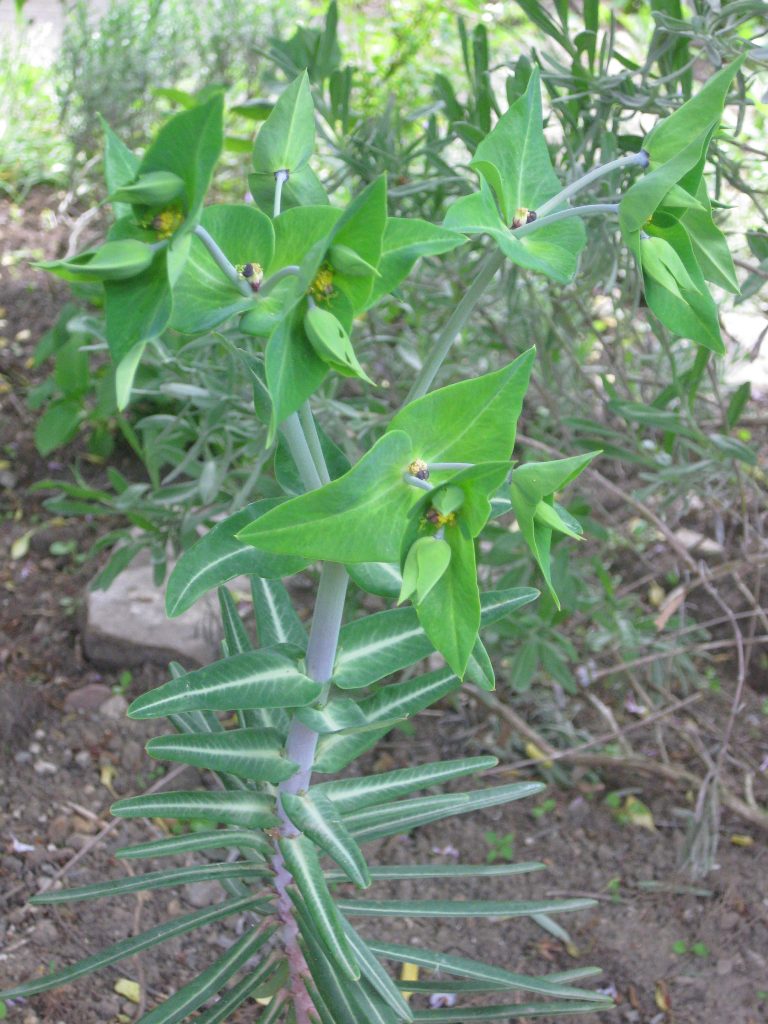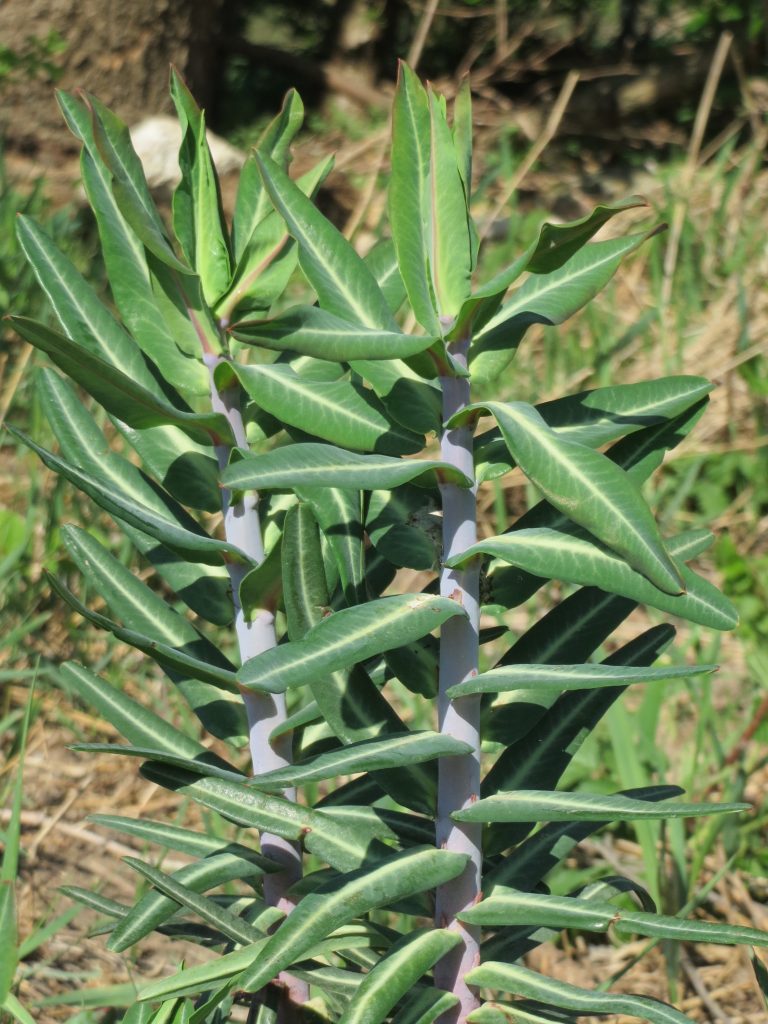
Also known as caper spurge, mole plant, paper spurge, and sassy Jack, this herbaceous annual or biennial is native to southern Europe, northwest Africa, and eastward through southwest Asia to western China. It is a member of the spurge family, Euphorbaceae, that also includes poinsettia, cassava, and castor oil plant. The glaucous, blue-green stems are fleshy and may exude a latex. The blue-green, waxy leaves are lanceolate, 3-5″ long, and have greenish white midribs. Male and female flowers appear on the same plant in late spring to early summer and are 1″ long, green to yellow-green, and lack petals. The fruit is coarsely wrinkled, 3 lobed, and produces a cluster of three seeds. Gopher spurge is cultivated as an ornamental but may become weedy and invasive. It self-seeds and is difficult to eradicate once established. The plant has been thought to repel mice and moles. All parts of the plant are poisonous, especially the latex exude, and are toxic to humans, cats, dogs, and horses. The genus name, Euphorbia, honors Euphorbus, the ancient Greek herbalist and personal physician of Juba II, King of Mauretania, an area in North Africa. The specific epithet, lathyris, comes from the ancient Greek λᾱ́θῠρος (láthuros), the ancient name for chickling vetch. Photo Credit Wikipedia

Type: Annual or biennial
Bloom: Small green to yellow-green male and female flowers on the same plant in late spring to early summer
Size: 1-3′ H
Light: Full sun to partial shade
Soil: Average, dry to medium moist, well-drained
Hardiness: Zones 1-11
Care: Can become weedy and invasive so remove flowers or seed pods before they mature.
Pests and Diseases: None of significance
Propagation: Seed (self seeds)
Companion Plants: Not relevant because of weedy invasive tendencies but plant is sometimes grown in the garden as a rodent repellent.
Outstanding Selections: None
Photo Credit:Wikimedia Commons